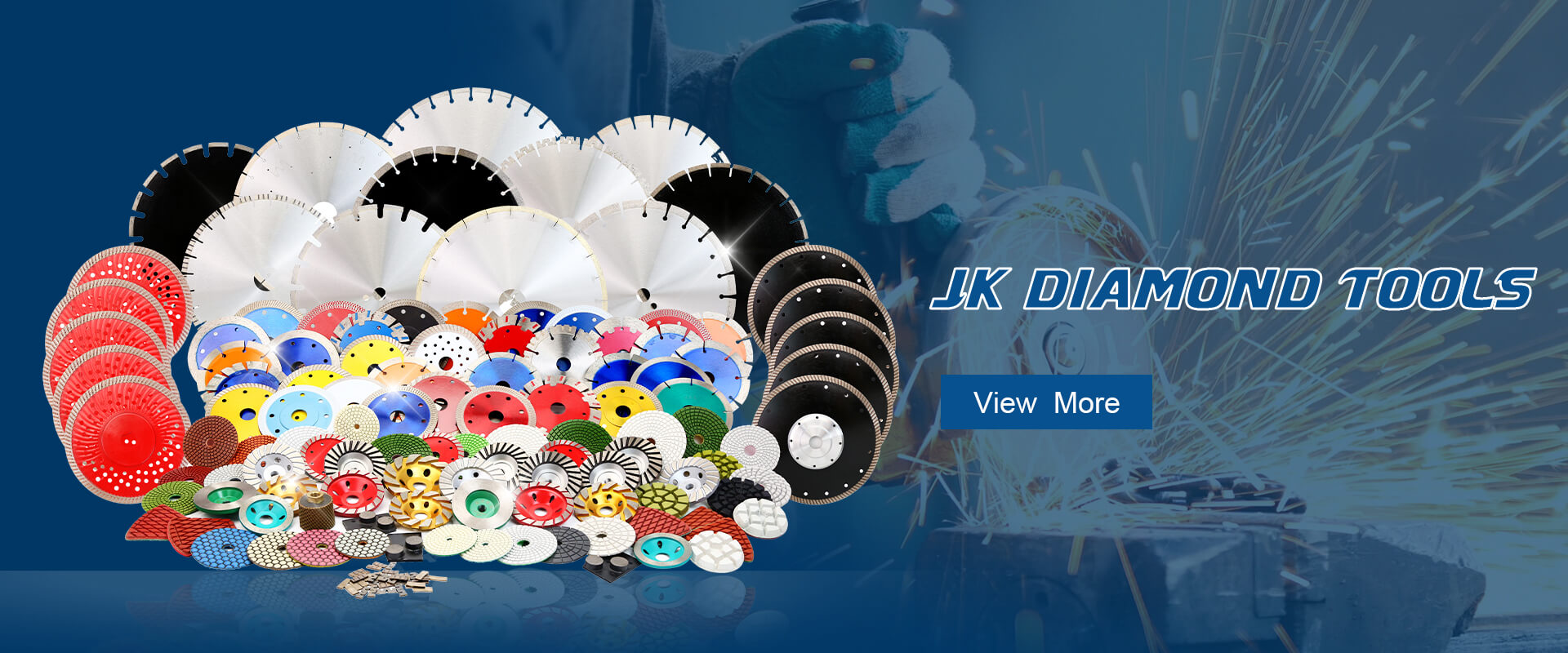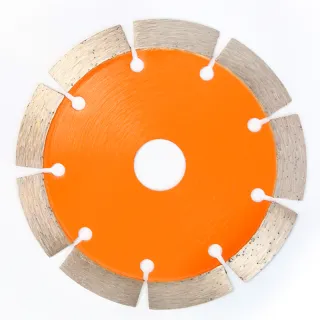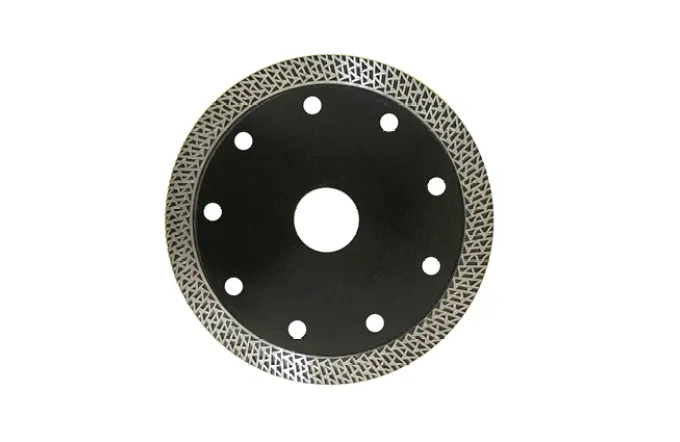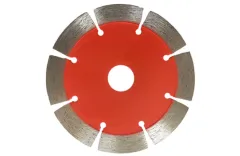Factors To Consider When Choosing The Right Diamond Blade
When choosing the right diamond blade, there are several important factors to consider. These factors will help ensure that the blade you select is suitable for your specific cutting application. Here are some key considerations:
Budget:
Consider your budget and balance it with the quality and performance requirements for your cutting project. While it's important to stay within your budget, remember that investing in a higher-quality blade can often provide better long-term value and performance. For frequent use and larger jobs, it is better to choose a more expensive Premium Series diamond blade as they will deliver longer life and a lower cost per linear foot of cutting.
Quality and Size of Saw or Grinder
It is all based on the horsepower and RPM of the tool being used to complete the task. Diamond blades are rated to match the RPM of the saws and grinders. High-speed handheld saws and high-speed cut-off saws need blades that are rated at higher RPM. Electric wall chasers need different blades from petrol-powered ones.
Check both aspects of your machinery prior to choosing the product to suit. This ensures not only value for money, but also more importantly SAFETY.
The Material Being Cut
The material being cut is indeed a crucial factor to consider when choosing a diamond blade. It significantly impacts the cutting speed and the lifespan of the blade. Materials generally fall into four categories: hard, medium to hard, medium to soft, and soft.
For hard materials, the metal bond holding the diamonds should be softer. This allows the bond to wear and expose the diamonds for cutting the material effectively. If the bond is too hard, it can cause the blade to glaze over quickly, rendering it useless. On the other hand, when cutting soft materials, a stronger bond is required to hold the diamond segments and increase the blade's lifespan.
It is a common misconception to assume that the hardest blade can cut any material. In reality, a hard-bonded blade is not suitable for cutting hard materials. As a general rule, it is important to determine the material that will be cut most often or the material for which blade performance is most critical.
If you plan to cut multiple materials with the same blade, such as asphalt and concrete, it is recommended to identify which material will be cut most frequently and purchase a blade specifically designed for that material.
By correctly identifying the material being cut and selecting an appropriate diamond blade, you can ensure efficient cutting, maximize blade longevity, and achieve satisfactory results.
Try to Avoid:
It is advisable to avoid certain types of diamond blades for optimal cutting performance and safety. Here are some types to be cautious of:
-
Combi Blades: Combination blades that claim to cut various construction materials, including steel, should be approached with caution. These blades typically have hard bonds, which may result in slow and challenging cutting when dealing with hard materials. Additionally, combi blades can cause issues like overloading the saw, tripping electric motors, or causing hand saws to bounce and kick. For better results, it is recommended to use product-specific blades designed for the specific material being cut.
-
General Purpose Blades: General purpose blades are budget-friendly options suitable for light users or handymen. While they may have segments of medium hardness to cut a range of building materials, they are not ideal for hard or abrasive materials such as asphalt or limestone. Using general-purpose blades for these materials can lead to quick wear and reduced blade lifespan.
-
Sintered Blades: Sintering is a less secure manufacturing process compared to laser welding for holding segments on a diamond blade. If a sintered blade gets hot, there is a risk of segments coming off, which is not only dangerous but also terminates the blade's usability. Sintering is commonly used in cheaper blades, so it is advisable to look for blades that are laser-welded for better segment retention and safety.
When considering the cost of diamond blades, it is important to note that the blade's price is often a minor factor compared to labor and overhead costs. Therefore, prioritizing performance and productivity over the lowest blade cost is crucial.
By avoiding combi blades, being cautious with general-purpose blades, opting for laser-welded blades, and considering long-term performance, you can enhance cutting efficiency, safety, and overall job quality.
What Blade Do You Need For Cutting?
Asphalt is known to be highly abrasive, causing blades to wear out quickly. To efficiently cut asphalt, it is recommended to use a JK Diamond Tools black blade.
Green concrete refers to concrete that has been set but is not fully hardened or cured, typically within 72 hours of being poured. It is also abrasive, so using a JK Diamond Tools black blade is advisable.
If you frequently cut a combination of asphalt, limestone, and concrete, it is recommended to use an JK-TOOLS Diamond Blades Corporation black asphalt blade. While it is ideal to use the recommended diamond blade for each specific material, the black blade will work well on asphalt and limestone and can also be used on concrete (although it may glaze up over time). To restore its effectiveness, you can cut some asphalt or limestone to "open up" the blade again.
For wall chasing and grooving, there is a special range of blades available in various thicknesses and diameters designed specifically for this purpose.
When cutting exposed aggregate, it is best to use black chasing blades, which provide good undercut protection if you cut through to the base. These blades are also suitable for use on green concrete. However, if you have exposed aggregate pavers made of different compositions, a white blade is needed.
Clay pavers require an JK-TOOLS Diamond Blades Corporation silenced blue blade when cutting with a brick saw. Unsilenced blue blades are available for hand saws, although a concrete blade may also suffice.
Ceramic and porcelain paving is extremely hard and brittle. When cutting these materials, it can be challenging with a handheld cut-off saw, so using a tile saw is recommended. Segmented blades can cause chipping or shattering of the pavers. Even specific stone blades may result in chipping and flaking of the hard surface. For the best results, it is advisable to use Clean Cut Blades or specially formulated Super Turbo blades.
Porcelain is made using special porcelain clay fired at very high temperatures, resulting in an exceptionally hard tile with minimal water absorption. "Ceramics" is a broad term that includes terracotta, stoneware, earthenware, and porcelain. Porcelain falls under the ceramic category, but not all ceramics are porcelain.
Alumina ceramic and silicon carbide are materials used in the manufacture of wear plates. Alumina ceramic is often combined with rubber, making cutting quite complicated. For this complex application, it is recommended to contact JK-TOOLS Diamond Tools for advice on their range of blades that can cut without chipping.
Granite is a very hard material that requires a blade with a softer bond, such as the JK Diamond Blades Corporation Granite Cutting Saw Blade is required. However, if used to cut any of the more abrasive materials mentioned earlier, these blades will wear out quickly.
Cutting refractory brick and marble presents significant challenges and requires specialist blades to prevent cracking or chipping. For the right blade for these applications, it is advisable to reach out to JK Diamond Blades Corporation for a quote.
Fiberglass and glass are best cut using electroplated tile saw blades.
Rescue blades, also known as vacuum brazed blades, are versatile and can cut a wide variety of materials, including concrete, masonry, steel, various irons, plastic, tile, wood, and glass. They are frequently used by fire brigades on "rescue" saws, hence the name. While they perform well in dry applications, using water with them can prolong the blade's lifespan.
| Material | Abrasiveness | Bond | UDT Blade |
| Limestone, sandstone | Extremely | Hard | Black |
| Asphalt | |||
| Green Concrete | |||
| Concrete pavers/pipes/kerbs | Very | Medium | White |
| Reconstituted limestone | |||
| Concrete Slabs, precast | |||
| Reinforced Concrete | |||
| Clay Bricks & Pavers | Abrasive | Medium/soft | Blue (or white on cut quicks) |
| Granite & hard clay bricks | Low | Soft | Pink |
| Alumina/Ceramic | Low | Soft | Specific range of blades |
| Refractory applications | Low | Soft | Specific range of blades |
| Ceramic | Low | Soft | Continuous rim ceramic |
| Porcelain | Low | Soft | Continuous rim porcelain |
| Marble | Low | Soft | Specific blade |
We always recommend discussing your requirements with us, as there are many variables to consider when selecting the appropriate diamond blade and core bit. It is important to have a clear understanding of your specific needs in order to provide you with the best recommendations. Please feel free to reach out to us and communicate your requirements so that we can assist you effectively.

Related Category
———
Related News
———
Benefits Of Choosing a Carbide Saw Blade For Your Project
Carbide saw blades are usually made of a mixture of cemented carbide and tungsten, iron, silicon and other elements. These tools are famous for their widespread use.
View MoreSegmented Saw Blade – How to Choose and Get the Most
As a contractor or DIYer, there are a lot of reasons you should own a segmented saw blade. If you’re familiar with the various diamond saw blades, you would understand the importance of its segmented design. With various work ranging involving stone materials, possessing the right blades would guarantee an excellent result while also reducing work expended and time spent.
View MoreHow to Make Circular Saw Blades Last Longer?
Unless you’re whittling a piece that you chopped from a tree, all the wood in carpentry projects came into contact with a circular saw blade at some point. Even the best circular saw blades can suffer from neglect. We know when the blade gets dull but how are you caring for circular saw blades between the time you buy it and when you throw it in the trash?
View MoreHow To Distinguish Between Segmented Saw Blades And Other Saw Blades?
The production of diamond saw blades is due to the diffusion of synthetic diamonds into the steel used. This makes them ideal for masonry projects. However, identifying and selecting segmented saw blades from batches requires you to pay attention to some characteristics and distinguish them from other saw blades.
View MoreQuick Find
———











